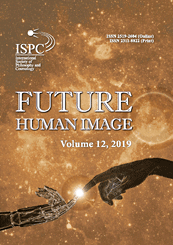Black Light and Condensed Space: The Image of the Universe
Black Light and Condensed Space: The Image of the Universe
Author(s): Dan HowittSubject(s): Philosophy, Psychology, Theoretical Linguistics
Published by: Международное философско-космологическое общество
Keywords: Condensed space; dark matter; black light; dark energy; microlimit; macrolimit; external universe; additive linguistic alteration; subtractive linguistic alteration; antonymic linguistic alteration;
Summary/Abstract: The core of this essay consists of predictions about the form of the observable universe, as well as about the form of what I refer to as the “external universe” (that is, the portion of the universe that I predict exceeds the observable universe). All of the regions of darkness of the observable universe are regions of black light illumination. Black light is visible light, in that it can be seen. Common visible light is invisible light, in that it cannot be seen. Common visible light of particular intensities can supplant the complete expression of black light of particular intensities. Black light illuminates space as black in the absence of common visible light, thereby revealing the microlimit of the observable universe; and black light illuminates the macrolimit of the observable universe as black. If the observable universe did not have a microlimit nor macrolimit, there would be blindness upon looking between constituents of the observable universe, and upon looking at black boundary-regions of the observable universe. If the observable universe did not have a microlimit, there would be blindness in the absence of common visible light. The vision of darkness is different than blindness. Space (the microlimit), or what is on the other side of space, is the source of black light. Additional sources may be black holes, and the macrolimit, or what is on the other side of the macrolimit. There may be black light of intensities that common visible light of any intensity cannot supplant the complete expression of it. Black light is what is referred to as dark energy. The only form that space can have is that of being condensed. It cannot be curved. Gravity is a phenomenon of different degrees of, and different distributions of, condensed space. Space, and the macrolimit, cannot be precisely observed, measured, nor conceived of, as they while they are in the observable universe, they are of what exceeds the observable universe, namely the external universe. The presence of a microlimit and macrolimit entails that there is another side of those limits, namely the external universe. The condensation of space is what is referred to as dark matter. Space pervades the observable universe, including all of the constituents of the observable universe, thereby entailing that they are fundamentally composed of space. While the constituents of the observable universe are relatively separate, they are fundamentally conjoined such that the observable universe is liquid in nature. There are no precise macrolimits of any of the constituents of the observable universe. The inability to precisely observe, measure, and conceive of the microlimit and macrolimit entails that they cannot be exceeded. The microlimit and macrolimit are formally different than any of the observable universe, as is the external universe. The observable universe was caused by, and continues to be caused by, what is of the external universe. It is impossible to know when, where, and how the observable universe began. Whereas constituents of the observable universe may expand away from one another, this does not entail that space itself — that is, the observable universe itself — is expanding. Time, infinity, zero, zero-dimensional, one-dimensional, two-dimensional, more than three-dimensional, massless, nothing, and eternal are not properties of the universe.
Journal: Future Human Image
- Issue Year: 2019
- Issue No: 12
- Page Range: 28-52
- Page Count: 25
- Language: English

